
The teenage Audubon Junior Naturalists visited the Least Tern nesting colony at Huntington State Beach |
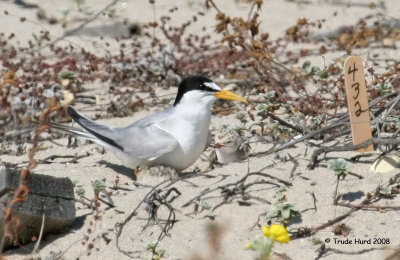
California Least Tern is the smallest tern, and it is ENDANGERED due to loss of nesting sites on sandy beaches |

Parent terns catch small fish offshore and bring it to their chicks on the sandy beach |
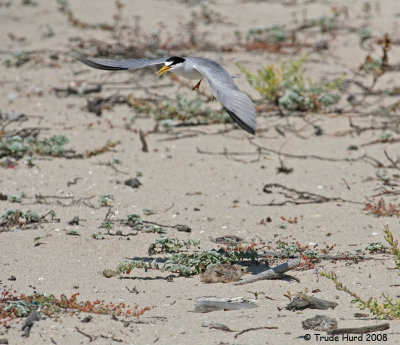
Chicks repsond to their parents high-pitched calls. This chick below belongs to another tern. |

Chicks fed, the parent flies off for more fish |

Chicks wait to be fed, camouflaged to match the sand |

This feeding cycle repeats, and the chicks grow |

This juvenile will soon be ready for the winter trip to Mexico and Central America |
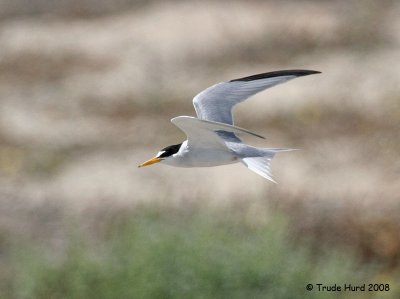
California Least Terns are only present in California from April to August to breed |

Threats include human disturbance and predators (crow, gull, falcon, cat, coyote) |
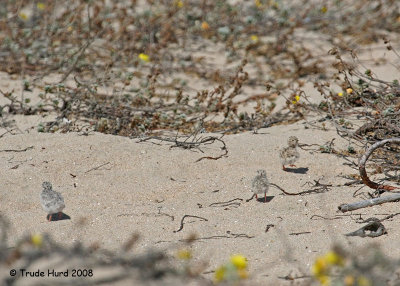
If chicks scatter instead of remaining still, they become easy prey for nearby predators |

After being escorted around the colony perimeter, everyone bicycled north to Bolsa Chica (except for the photographer) |
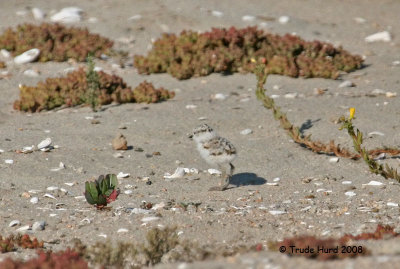
Other chicks awaited us at the end of the Bolsa Chica boardwalk |
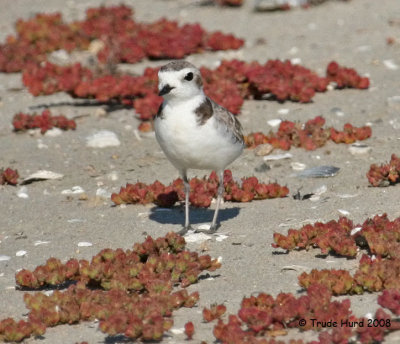
Snowy plovers are also ENDANGERED and nest on sandy beaches |
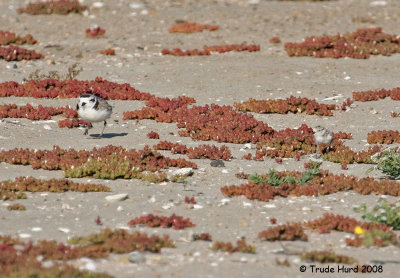
Snowy plover chicks are also camouflaged to match the sand |

This heavily marked western willet resembles an eastern willet |
click on thumbnails for full image











